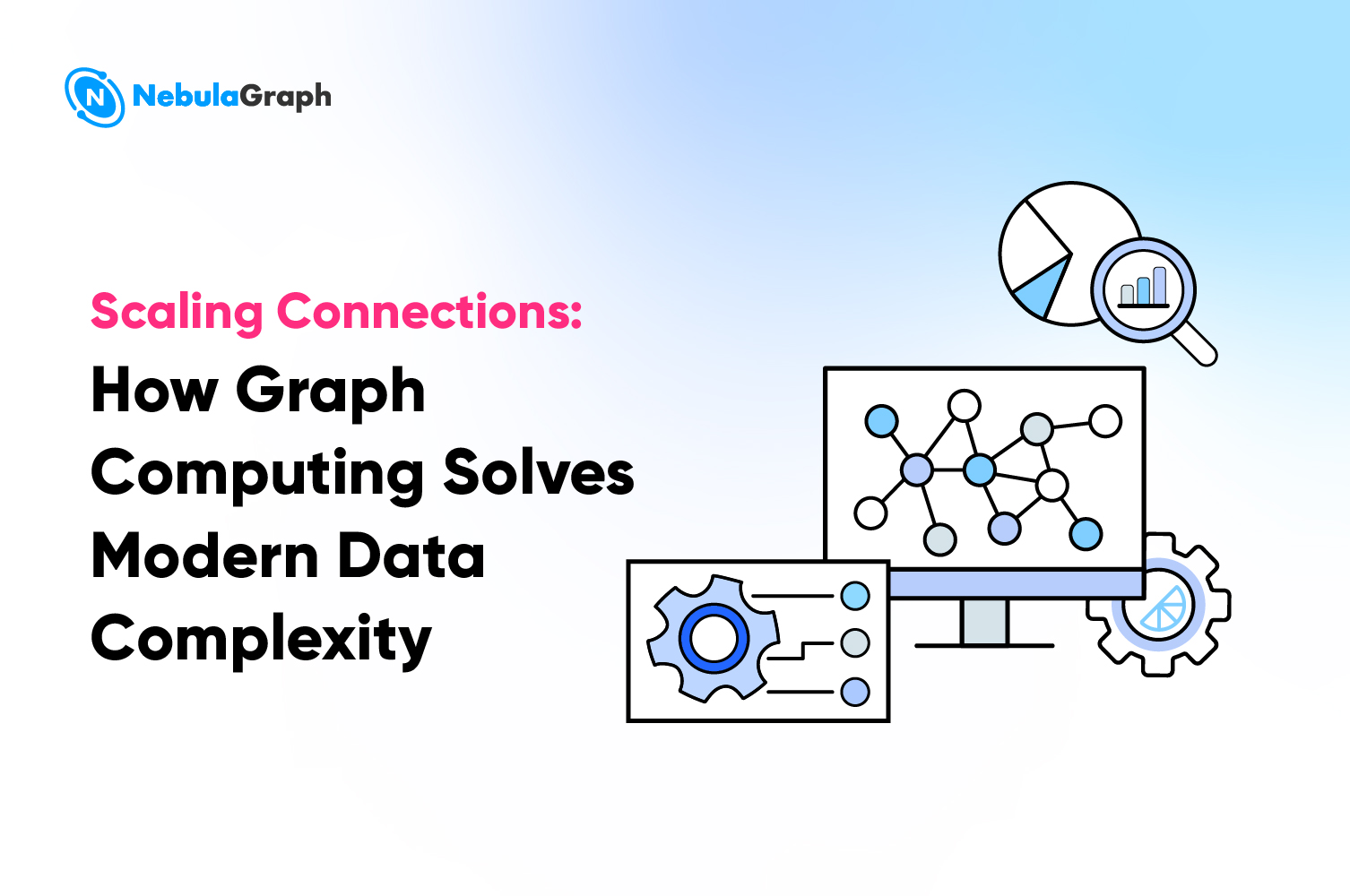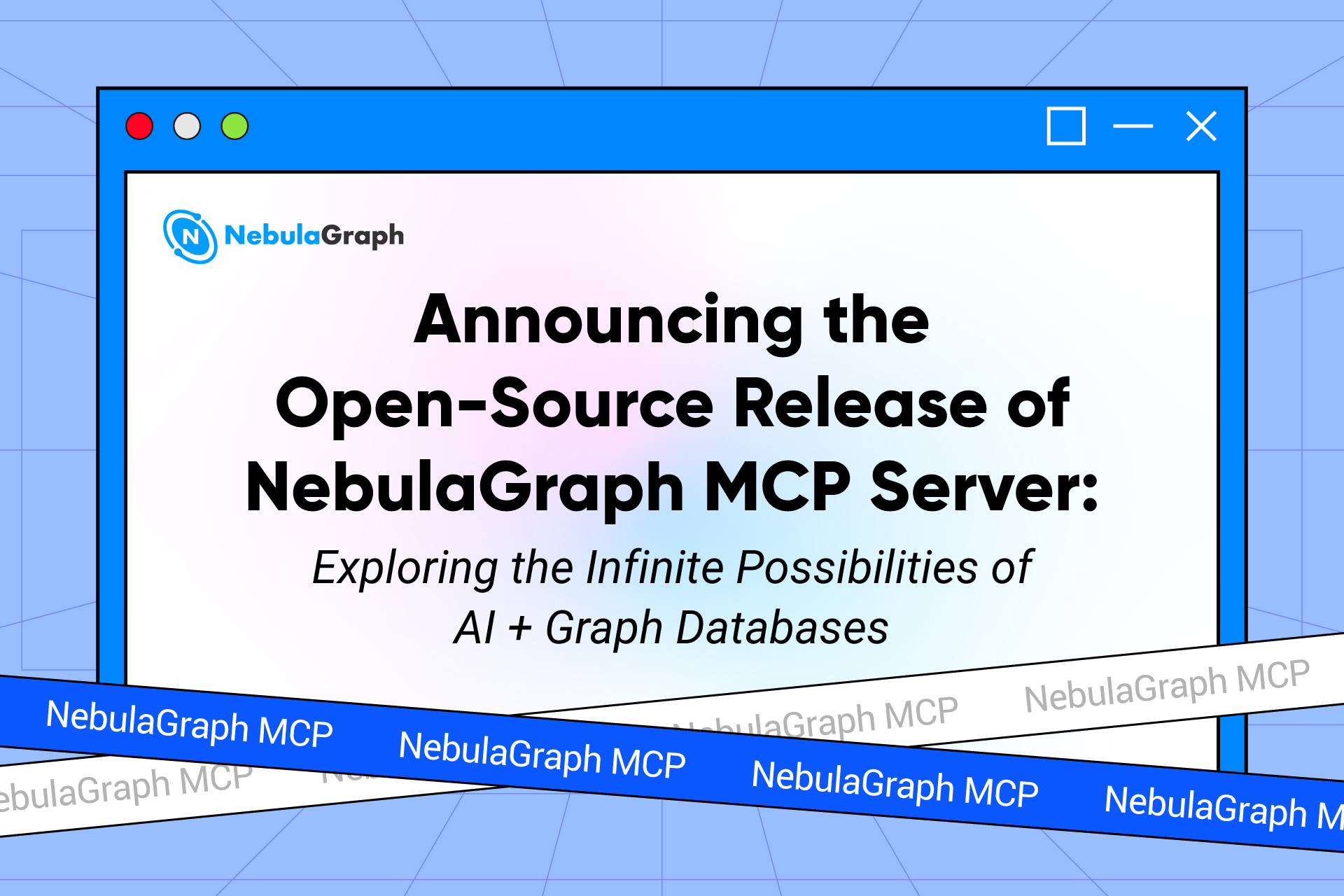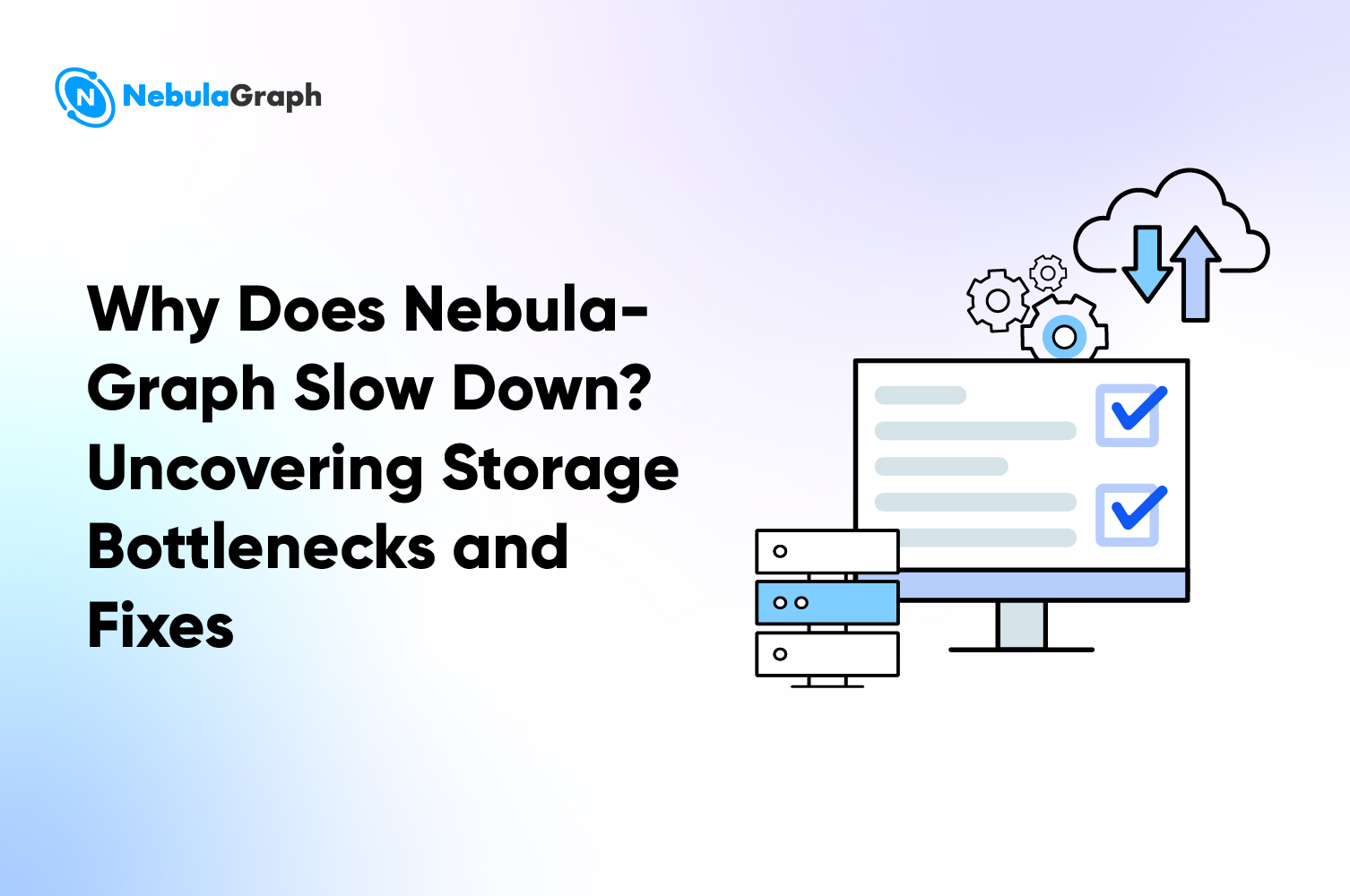LLM
Graph Analytics and Graph Databases
From people's purchasing behavior to advanced medical treatments, virtually every industry now relies on data in some form or another. With the growth of technology and the access to and storage of large amounts of data, it can be argued that smart organizations have hit the jackpot. When used effectively, data can be an invaluable tool when making decisions, optimizing processes, pioneering new products, predicting outcomes, etc. Not surprisingly, many businesses have incorporated data-driven models into their operations, leading to improved efficiency, productivity and profitability. Data is indeed a goldmine for companies that are willing to use it strategically. But what is the place of analytics in all this?
Analytics is the ultimate key to tapping into this immense power of data - any data. This means that understanding the tools that make this possible is essential. Marke-twise, the graph analytics market is forecasted to reach a value of $2,522 million by 2024, representing a CAGR of 34.0% between 2019 and 2024. Route optimization is expected to be among the biggest growth drivers during this period.
In this article, we'll delve into graph analytics and graph databases, a combination that can lead to limitless opportunities through your data.
What is Graph Analytics?
Graph analytics is a technology that uses algorithms to help analysts comprehend the relationships between data that is kept in a graph database. This is a rapidly growing field in data analysis that focuses on examining how certain entities relate to each other by understanding the connections between them.
This approach uncovers meaningful patterns within complex datasets that would otherwise remain undetected due to their sheer size and complexity.
Why use graph analytics?
By uncovering previously unknown correlations, graph analytics provides a unique perspective that is not possible when using traditional data analysis methods. This way, organizations can answer complex questions without added complexity, providing them with an accurate and accessible approach to analyzing their data.
Graph analytics can be used extensively in fields such as network security, fraud detection, business intelligence, and social network analysis. Graphs allow for visual representations of connections between elements, which helps to gain insight into how these elements are related with each other. This gives organizations the ability to make more informed decisions based on real-time data mining, by recognizing trends or identifying clusters quickly and efficiently.
In addition, graph analytics provides organizations with increased accuracy levels when conducting predictive modeling and sentiment analysis of large datasets.
Graph analytics can be used to find deep patterns and insights, and to answer questions about the data. For example, you could use graph analytics to find out which items are most strongly connected or to identify clusters of items.
How graph analytics work
The typical graph structure is composed of nodes (also referred to as vertices) and edges. Nodes signify points in the data, like customers, organizations, or products. Edges indicate the connection or relation between nodes - they can be one-way or two-way and might have an associated weight to show how strong the relationship is.
Once a graph database is established, analytical work can be done. The graph algorithms from analytics tools can reveal values in the data or interesting details - like nodes with considerable activity. The data can also be rearranged for easier analysis – such as searching for nodes that meet specified criteria.
The result of graph analytics can provide a comprehensive understanding of the underlying structure of the analyzed data – from deriving patterns or anomalies to interpreting influence among groups while also discovering hidden information previously unknown.
Amongst the popular tools for graph analytics are NebulaGraph, IBM Graph, and Google Charts.
Types of graph analytics
There are four main types of analytics that can be utilized in graph analytics: connectivity analysis, community analysis, path analysis, and centrality analysis.
1. Connectivity analysis
Connectivity analysis is used to determine how strong the relationships are between different data points (nodes). It can be utilized in graph analytics to detect vulnerabilities or outlying activity, such as excessively high or low activity.
2. Community analysis
Community analysis looks at how nodes interact and what elements affect their behavior. Nodes can be grouped together based on the similarities they have. From there, the data can be reorganized to come up with strategies to improve those interactions and create value out of them.
3. Path analysis
As the name suggests, path analysis focuses on the path from one node to the other. It’s particularly used to identify the shortest path between two nodes in a graph. The pathfinding algorithm takes into account the weights of the edges in the graph to find the most efficient path between two nodes.
4. Centrality analysis
Centrality analysis measures the importance of a node in a graph. There are several different measures of centrality, but all attempt to quantify how important a node is in the overall network.
Centrality can be applied in graph analytics to identify important nodes in a network and to understand the relationships between them. Centrality can also be used to help identify hubs and bottleneck nodes.
Leading graph analytics use cases
Graph analytics can be leveraged for a range of uses, like:
1. Route optimization
Knowing the most efficient way to travel from Point A to Point B can save time, money, and effort. To get started with graph analytics for route optimization, one must first create a connected set of nodes outlining the route. Nodes can be airports, stops along a bus route, or any other points of interest related to the movement.
After this initial step is complete, it is then possible to use graph analytics tools to analyze route time, cost of travel by factoring in fuel consumption and tolls, as well as look at alternative routes in order to find the quickest or most cost-effective way of reaching a destination.
2. Social networks
Graph analytics can be a powerful tool to help us better understand the complexities of social networks. By analyzing the interactions and relationships between users, graph analytics can reveal insights that would otherwise be impossible to uncover. This could include cases such as finding influential users, detecting communities that have formed within a network, and understanding user behavior over time.
Perhaps more importantly, by identifying weak signals in user patterns, graph analytics could also be used to detect suspicious account activity or discover hidden malicious campaigns.
3. Recommendation engines
There are many ways that graph analytics can be used in recommendation engines. For example, graph analytics can be used to identify relationships between items in a dataset. This information can then be used to recommend related items to users.
Additionally, graph analytics can be used to identify clusters of similar items within a dataset. This information can then be used to recommend similar items to users. Finally, graph analytics can be used to identify influencers within a dataset. This information can then be used to recommend influential items to users.
Further Reading: Using graph databases in real-time recommendation
4. Fraud detection
Graph analytics can be used to detect fraud by identifying relationships between entities that may not be obvious. For example, if a company is trying to defraud the government of taxes by claiming false expenses, graph analytics can be used to identify relationships between employees, vendors, and suppliers that may not be immediately apparent.
Graph analytics can also be used to identify patterns of behavior that may indicate fraud. For example, if an employee always bills for a certain amount of expenses every month, but this month bills for twice as many expenses as usual, this could be an indication of fraud.
Further Reading: How to visualize and detect fraud with knowledge graphs
5. Journalism
Graph analytics can help reporters and editors analyze complex relationships among people, places, things, and events.
For example, by analyzing data from social media posts, graph analytics can be used to identify the social networks of people who are talking about a certain topic. This information can then be used to help reporters and editors decide which topics to cover and which sources to contact for more information.
Graph analytics can also be used to map the relationships between different entities in a story. For example, if there is a stabbing incident that involves several people, a graph could be used to show the relationships between the people involved in the stabbing. This information could help reporters and editors understand the dynamics of the event and how it unfolded.
6. Pandemic patterns
Graph analytics offer a powerful tool that can be used to analyze patterns related to pandemics. It can be utilized to understand how connections between different elements of the system, such as person-to-person contact or patterns in viral spread, can be evaluated and synchronized.
For example, if there is a new outbreak of a virus, graph analytics can be used to identify who may have been in contact with the person who contracted the virus. This information can then be used to help track and contain the spread of the virus.
7. Analyzing communications networks
Graph analytics can identify network communication patterns that would not be found using traditional methods.
The deep analysis can provide insight into telecommunications service level agreements, customer trends, and security threats over time. This way, engineers can diagnose problems and create better solutions.
As computing power improves, we can expect to see graph analytics being implemented for an ever broader range of use cases.
Graph analytics and graph databases
Graph analytics and graph databases work together by taking advantage of the structure of data in a graph database. A graph database is perfect for managing data that has complex relationships between entities, and this is where graph analytics come in. Graph analytics allows you to query and analyze these relationships to find patterns and insights that you wouldn't be able to see with other types of analysis.
For example, let's say you have a table of customers with information about each customer's name, address, and purchases. You could use a graph database to represent this data as a graph, with customers as nodes and their addresses and purchases as edges between them.
This would allow you to query the data to find all customers who live in a certain city, for example. You can then use graph analytics to study their behavior and unearth powerful insights that can be used to create or recommend highly targeted products for this group of customers.
Graph analytics with NebulaGraph
NebulaGraph is an open-source, distributed, and highly scalable graph database, designed to handle super large-scale graphs with latency in the milliseconds range. Major companies such as Tencent, Vivo, and WeChat have already incorporated NebulaGraph into their data management operations.
NebulaGraph provides a powerful graph analytics framework aptly named NebulaGraph Analytics, an ultra-fast tool for performing graph analysis of data stored in the NebulaGraph database.
The NebulaGraph Analytics framework supports a variety of popular graph computing algorithms, including PageRank, APSP, KCore, SSSP, DegreeWithTime, Louvain, TriangleCount, and ClosenessCentrality, among many others.
Conclusion
Data analysis is an emerging goldmine, a powerful tool for businesses seeking to unlock the potential of their data and uncover new opportunities for growth. With big data now commonplace, organizations have access to unprecedented amounts of information that can be used to gain insight into customer trends, identify risks, optimize processes, innovate new products and inform decision-making. Graph analytics has fundamentally changed what we can do with this data.
This new way of leveraging data-driven analytics gives companies a unique opportunity to boost their competitive advantage and grow more sustainably. With its many applications embedded across almost every industry, graph analytics will certainly remain an integral tool in the modern era of data science.
By taking advantage of the potential afforded by graph analytics, developers are now able to create cutting-edge solutions that revolutionize how businesses look at large data sets. Rather than tediously sifting through loads of disorganized data, advanced solutions powered by graph analytics can produce actionable insights in a fraction of the time. This technology has incredible potential across all types of organizations - and developers should jump on the opportunity to be at the forefront of those changes. This way, they can begin to create innovative solutions that tap into the enormous potential of graph analytics to make sense of information with unprecedented speed and accuracy.
Exploring Graph Databases?
Check out NebulaGraph Database and join the open source community through Slack to uncover more practical use cases of graph databases.


